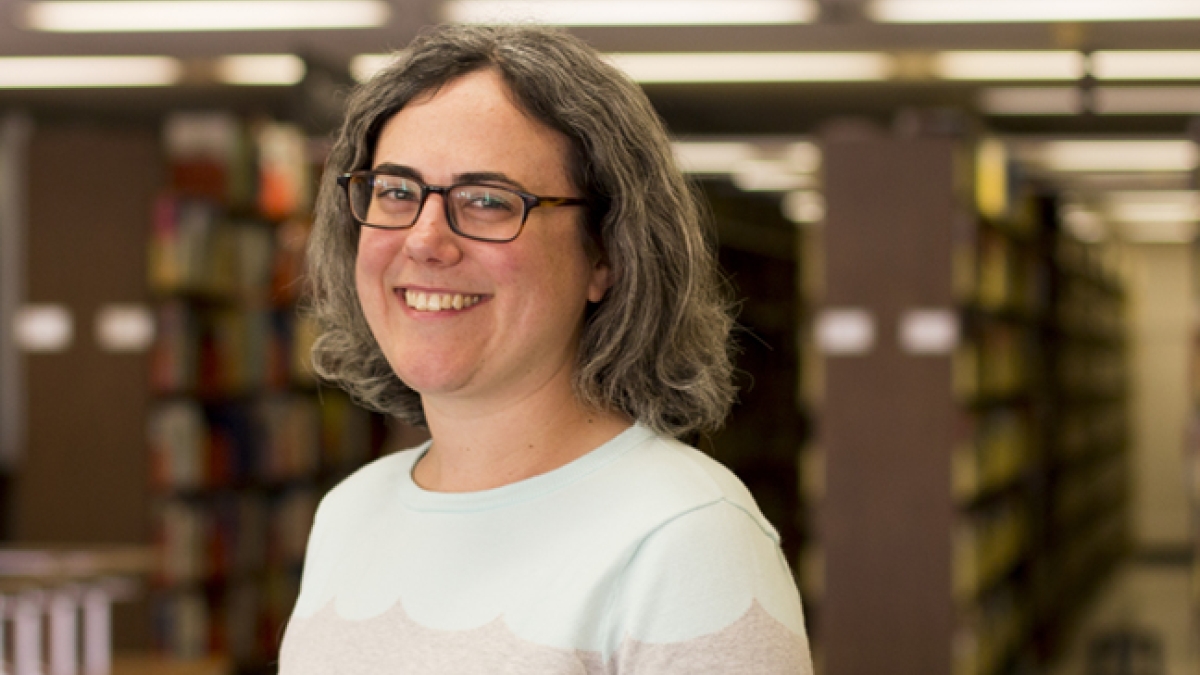By and for the people: Ensuring long-term access to public information
In honor of Endangered Data Week, ASU Library's Shari Laster discusses the challenges and opportunities of providing access to federal information

Shari Laster, head of Open Stack Collections, ASU Library.
With the ease of digital publishing comes the Herculean effort of digital preservation.
When pages of content get removed quickly from federal government websites, like those belonging to the EPA or to the White House, access to that information is left hanging in the balance.
“The systems that we previously relied on to provide long-term access to public information did not carry over to the digital era, and now our challenge is to develop the infrastructure that is needed so that we don’t lose this entire era of history,” said Shari Laster, head of Open Stack Collections for the ASU Library.
Laster is a co-editor of an environmental scan report addressing national concerns over the preservation of government information.
For journalists, policymakers, historians and others who rely on public information to fuel their work, gaps of government data and information present major obstacles and ultimately limit our collective ability to conduct analyses and hold the government accountable.
In honor of Endangered Data Week, Laster discusses the challenges and opportunities of providing access to federal information and the work she is carrying out as part of the steering committee for the PEGI Project (Preservation of Electronic Government Information), comprised of eight librarians representing six academic research institutions, including Arizona State University.
Question: What is the report you worked on and why was it needed?
Answer: Researched and written by Sarah K. Lippincott, the environmental scan report, which was completed with funding from participating institutions including ASU Library, describes an incredibly complex environment of how government information is made available, and how it’s collected, described and preserved for future access both by government entities and nongovernment entities. A lot of work is happening, but very little of it is coordinated, and through our work in the PEGI Project we became convinced of the need for an environmental scan. Commissioning the research and writing this report was an opportunity to improve cooperation and alignment where it’s possible. If we can know more about the information ecosystem and the work we’re all doing, then we can better identify where the gaps are and what efforts are needed.
Q: Why is born-digital government information so difficult to preserve?
A: There are a few reasons. The first is that the systems that are currently in place to capture this content are collectively inadequate to the challenges at hand. Information disseminated by the government online is inherently fragile — content can change, it can go missing — and we need new systems in place that can be effective in capturing it. There’s also just a lot of content. While the public is exposed to greater quantities of information than ever before, it's become a huge challenge to collect and preserve due to the vastness of what's out there.
There is also less awareness about the importance of these efforts. Everything that shows up on federal government websites is public information, but not all of it is considered as a permanent record for the National Archives and Records Administration to maintain for the long term. Some of it is collected by the U.S. Government Publishing Office or the Library of Congress, but a lot of it is not, for various reasons. With the current piecemeal way that this content is preserved, the historical record is fragmented and not all that complete, and access to that record is increasingly difficult to navigate.
Q: Has this issue of access to federal information become more urgent?
A: The issue has been especially high profile since the beginning of the Trump administration. While the PEGI Project pre-dates the 2016 election, there was a lot of public attention and concern in the months immediately after the election. In 2017, we saw many new efforts that emerged, both in research communities and from libraries and cultural heritage institutions.
Q: Access to information is maybe something we take for granted given the abundance of it these days. How should we be thinking about access in the long term?
A: The more that information is only available online, the more vulnerable it becomes because it’s easy to change what’s available to the public. It’s an enormous investment in resources and labor to determine what is worth collecting and preserving for long-term access, but that access is essential for future research and analysis. For example, journalists rely on long-term access to information to see how the public record has changed over time. There are also researchers and historians who are going to be looking for documentary evidence and will need as complete a record as is possible. It’s difficult to know what information will be historically valuable, but we must take a long view when it comes to preservation.
Q: How is ASU connected to this work?
A: Arizona State University has always been invested in this work. The ASU Library was designated as a Federal Depository Library in 1944 as a way to provide the public direct access to government documents — reports, statistics, studies and other materials produced by federal agencies — and this commitment has grown over time. For example, ASU Library is one of only a few institutions that collects and provides access to public information from the state of Arizona. Access to open digital content is a part of the ASU Library’s goal to deliver “everything for everyone, everywhere.” By supporting the PEGI Project, ASU is investing in information access not only for today but also for future generations — for researchers, journalists and interested members of the public that will need to rely on the collections of libraries and archives to understand and hold governments accountable, and to learn from the past so we don’t repeat it.